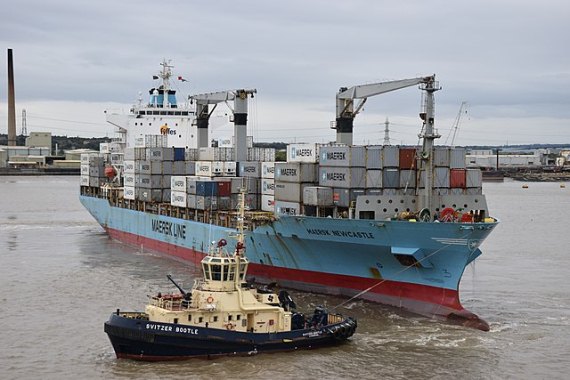- Maersk expects strong demand for exports from Asia to continue for the rest of the year while it also sees early signs of a pre-Chinese New Year rush in December
- Equipment availability is seen to continue to be tight in the fourth quarter
- Ports in Asia Pacific continue to be severely congested and current operational challenges are not expected to improve in the immediate future
- The severity of container shortages is seen to increase across Asia
Maersk expect headwinds for its service schedules in the fourth quarter, as strong export demand from Asia, particularly into the US and Europe, is seen to continue for the rest of the year due to several upcoming holidays, including China’s Golden Week and Christmas.
The global container shipping giant in its latest Asia-Pacific market update also expects to see early signs of a pre-Chinese New Year rush in December adding to the seasonal volume rushes.
“China’s October Golden Week, Christmas and Chinese New Year will bolster strong demand for container shipping for the last quarter of 2021. But port congestion, especially in the US and Europe, and service delays are expected to create headwinds for service schedules,“ said the container liner in an emailed update on September 27.
Inventory levels in Europe and the US remain at their lowest levels on record, leading to stock outs on some products. This means even once retail demand declines, “we will see cargo volumes continue to remain strong as inventory levels need to be rebuilt,” the company added.
Moreover, in southern Vietnam, hundreds of factories closed under lockdown rules are expected to reopen from early October, after Ho Chi Minh City authorities extended social distancing guidelines until September 30 due to rising Covid-19 cases.
Equipment availability is seen to continue to be tight in the fourth quarter. “Our vessel schedules continued to be affected by port delays and we find it necessary to change some port rotations to reduce the total delay faced,” Maersk said.
Returning empty containers back to Asia is challenging as equipment turn-round times continue to increase driven by landside and seaborne delays.
Imports from Asia are expected to be stronger in the fourth quarter with network utilization remaining above 95%. As boxes remain in North America and Europe for longer, so the severity of container shortages increases across Asia, said Maersk.
Outlook for trade lanes
The carrier said market demand on the Asia to Europe lane is expected to be strong and vessel space to be very tight, while the impact of equipment shortages in Yantian and Nansha and feeder capacity shortages in Southeast Asia will continue to be felt.
From Asia to North America, strong demand should continue for the rest of the fourth quarter but Maersk noted that the overall North American ports situation has deteriorated recently. “We expect the loss of capacity from missed sailings to continue.”
From Asia to Latin American, the outlook through China’s Golden Week remains positive. “We recommend customers divert cargo to North/East China ports if possible,” the carrier said.
From Asia to West Central Asia, strong demand to India is expected in the coming month due to Diwali (Festival of Lights) in early November, mainly driven by household goods. Maersk expects space availability to be a key challenge.
From Asia to Oceania, market demand is expected to be strong in the coming months and capacity to be tight. Congestion in Asia and Oceania ports continues to put pressure on vessel schedules. Said Maersk: “We suggest customers plan their supply chains well ahead taking into consideration additional delays currently faced on the network.”
Situation at key ports
As for the situation at major ports around the world, vessel waiting time has increased, requiring more ships per string to lift the same cargo volume. Covid-19 led shutdowns have added to the delay in vessels from Asia.
Ports in Asia Pacific continue to be severely congested. With continued high yard density issue and weather disruption since July, operational challenges remain in port operations and the situation is not expected to improve in the immediate future.
Ports of Los Angeles and Long Beach congestion levels continue to deteriorate moving further into peak season with more than 70 vessels waiting at anchorage recently. Labor restrictions coupled with high throughput volumes remain the primary constraint.
Port of Savannah has become increasingly challenging recently as congestion across the East Coast picks up. There were more than 30 vessels at anchorage with wait times upwards of seven days in mid-September.
Port of Seattle continues to struggle with available yard capacity. Waiting times have increased to 11 to 12 days and the typical port stay lengthening from three days to about a week.
UK ports are operating smoothly but with very severe trucking shortages across the country, leading to high yard density in ports. Port of Rotterdam is also seeing trucking shortages although not as severe as UK.
Photo by Niels Johannes





